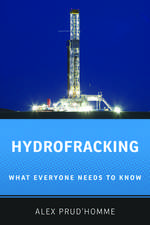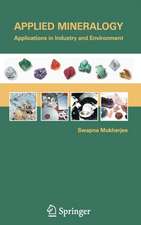Karst Hydrology and Physical Speleology
Autor A. Bögli Traducere de J. C. Schmiden Limba Engleză Paperback – 13 dec 2011
Preț: 642.83 lei
Preț vechi: 756.27 lei
-15% Nou
Puncte Express: 964
Preț estimativ în valută:
123.04€ • 133.70$ • 103.42£
123.04€ • 133.70$ • 103.42£
Carte tipărită la comandă
Livrare economică 21 aprilie-05 mai
Preluare comenzi: 021 569.72.76
Specificații
ISBN-13: 9783642676710
ISBN-10: 3642676715
Pagini: 304
Ilustrații: XIII, 284 p.
Dimensiuni: 170 x 244 x 16 mm
Greutate: 0.49 kg
Ediția:Softcover reprint of the original 1st ed. 1980
Editura: Springer Berlin, Heidelberg
Colecția Springer
Locul publicării:Berlin, Heidelberg, Germany
ISBN-10: 3642676715
Pagini: 304
Ilustrații: XIII, 284 p.
Dimensiuni: 170 x 244 x 16 mm
Greutate: 0.49 kg
Ediția:Softcover reprint of the original 1st ed. 1980
Editura: Springer Berlin, Heidelberg
Colecția Springer
Locul publicării:Berlin, Heidelberg, Germany
Public țintă
ResearchCuprins
1. Karstifiable Rocks.- 1.1 Introduction.- 1.2 Evaporites.- 1.3 Carbonate Rocks: Limestone and Dolomite.- 2. Processes of Dissolution of Karstifiable Rocks, Corrosion.- 2.1 Dissolution of Gypsum and Rock Salt.- 2.2 Dissolution of Carbonate Rocks.- 2.3 Karst Denudation.- 3. A General View of Exokarst.- 3.1 Karren, the Small Solution Feature.- 3.2 Small, Closed Hollows in Karst.- 3.3 Corrosion Plains.- 3.4 Fluvial Karst Forms: Karst Valleys, Dry Valleys.- 3.5 Glacial Karst.- 3.6 Poljes.- 4. Endokarst and Karst Hydrology.- 4.1 Introduction.- 4.2 The Origin of the Water in Endokarst.- 5. Physical Behavior of Karst Water.- 5.1 Hydrological Perviousness — Karst Hydro logical Activity — Velocity of Flow.- 5.2 Catchment Area — Local Base Level.- 5.3 Shallow and Deep Karst.- 5.4 Pressure Flow — Gravitational Flow; the Cave River.- 5.5 Piezometric Surface.- 5.6 Poljes as Karst-Hydrological Regulating Factors.- 6. The Karst Hydrological Zones.- 6.1 Introduction.- 6.2 Vadose Zone.- 6.3 Phreatic Zone.- 7. Karst Water — Groundwater.- 7.1 Introduction.- 7.2 Underground Water.- 7.3 “Karst Barré”.- 7.4 Blocked Karst.- 8. Underground Karst Levels.- 8.1 Introduction.- 8.2 The Cave Level of the Piezometric-Surface Type — Evolution Level.- 8.3 Cave Levels According to the Type of River-Bed.- 9. Karst Springs.- 9.1 Introduction.- 9.2 Classification of Karst Springs.- 9.3 Vauclusian Springs and Other Large Karst Springs.- 9.4 Periodic Springs — Ebb and Flow Springs (Intermittent Springs).- 9.5 Subaqueous Springs.- 9.6 Physicochemical Properties of the Water of a Karst Spring.- 10. Tracers.- 10.1 Tracers.- 10.2 The Tracer-Diagram.- 11. Incasion, Breakdown.- 12. Speleomorphology, the World of Forms Created by the Subterranean Removal of Matter.- 12.1 Introduction.- 12.2 LargeForms.- 12.3 Small Forms.- 13. Cave Sediments.- 13.1 Clastic Sediments.- 13.2 Organic Sediments.- 13.3 Chemical Sediments.- 14. Speleogenetics.- 14.1 The Role of Joints and Bedding Interstices in Speleogenetics.- 14.2 The Development from Interstice to Cave Passage Under Phreatic Conditions.- 14.3 The Development to a Cave Level.- 14.4 Primary and Secondary Vadose Cave Formation.- 14.5 Widening of Interstices.- 14.6 Phases in the Development of Cavities.- 15. Speleometerology — Speleoclimatology.- 15.1 Movement of Air in Caves.- 15.2 Cave Temperatures.- 15.3 Humidity of the Air.- 16. Ice Caves.- 17. Classification of Underground Cavities.- 17.1 Definition of Cave.- 17.2 Genetic Classification.- 17.3 Geological-Petrographical Classification.- 17.4. Classification According to Size.- 17.5. Classification According to Prominent Characteristics.- Appendix (A) Conventional Cave Signs.- References.- Plates.












